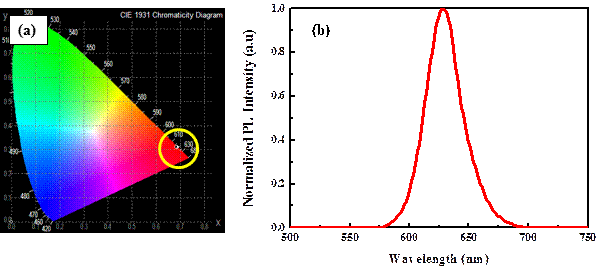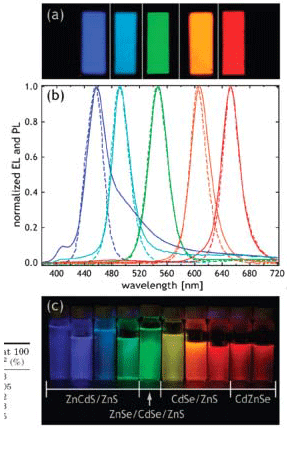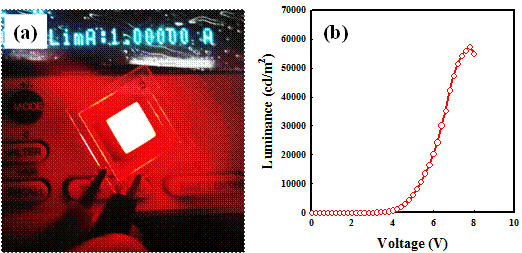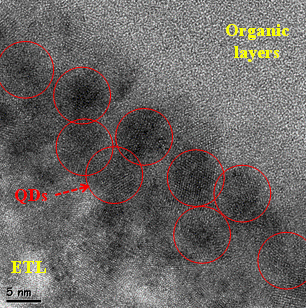
Figure 1. EL and PL characteristic. (a) CI E coordinate of red QLED, (b) PL intensity of red QD solution

Figure 2. Various color with different core size of QDs
[Polina O. Anikeeva, Jonathn E. Halpert, Moungi G. Bawendi and Vladimir Bulovic
(MIT), Nano Lett, 2009, 9 (77), pp2532]
A quantum-dot light emitting diode (QLED) has emerged as an interest candidate for light source materials, since it has
the advantages of good color purity (narrow FWHM) [Fig 1.] and ease of color tunability [Fig 2.]. Also, because QLED emits light from the
quantum well, it has high photoluminescence efficiency.
The color of QLEDs can be easily tuned color by varying the QD’s core size or the composition of QDs without changing device structure
and components. Also, QLED can be deposited by printing and spin-coating, making it a coast-effective and suitable for flexible applications.
By using QDs with the different core sizes, devices with emissions over a broad wavelength range can be achieved. The color of QDs depend on their core sizes with same material. Therefore, we can change the emission color by using different core sizes of QD material. [Fig 2.] in the same device structure. Also, they are more stable against moisture and oxygen as compared with organic materials due to have heavy metal-based materials.
In our group, we reported red QLED which had best performance in the world [Fig 3.(a)-(b)], [Fig 4.] by using inverted structure and Cs2CO3 doped AZO material.

Figure 3. Operating image and best performance of QLED.
(a) Operating image of QLED and (b) luminance-voltage characteristic.
[Hyo-Min Kim, Abd. Rashid bin Mohd Yusoff, Jun-Ho Youn and Jin Jang. J. Mater. Chem. C, 2013, 1, 3924]

Figure 4. A formation of QDs in QLEDs
[Hyo-Min Kim, Abd. Rashid bin Mohd Yusoff, Jun-Ho Youn and Jin Jang. J. Mater. Chem. C, 2013, 1, 3924]
- References
-
- 1. Polina O. Anikeeva, Jonathn E. Halpert, Moungi G. Bawendi and Vladimir Bulovic. Nano Lett, 2009, 9 (77), pp2532.
- 2. Hyo-Min Kim, Abd. Rashid bin Mohd Yusoff, Jun-Ho Youn and Jin Jang. J. Mater. Chem. C, 2013, 1, 3924





















































